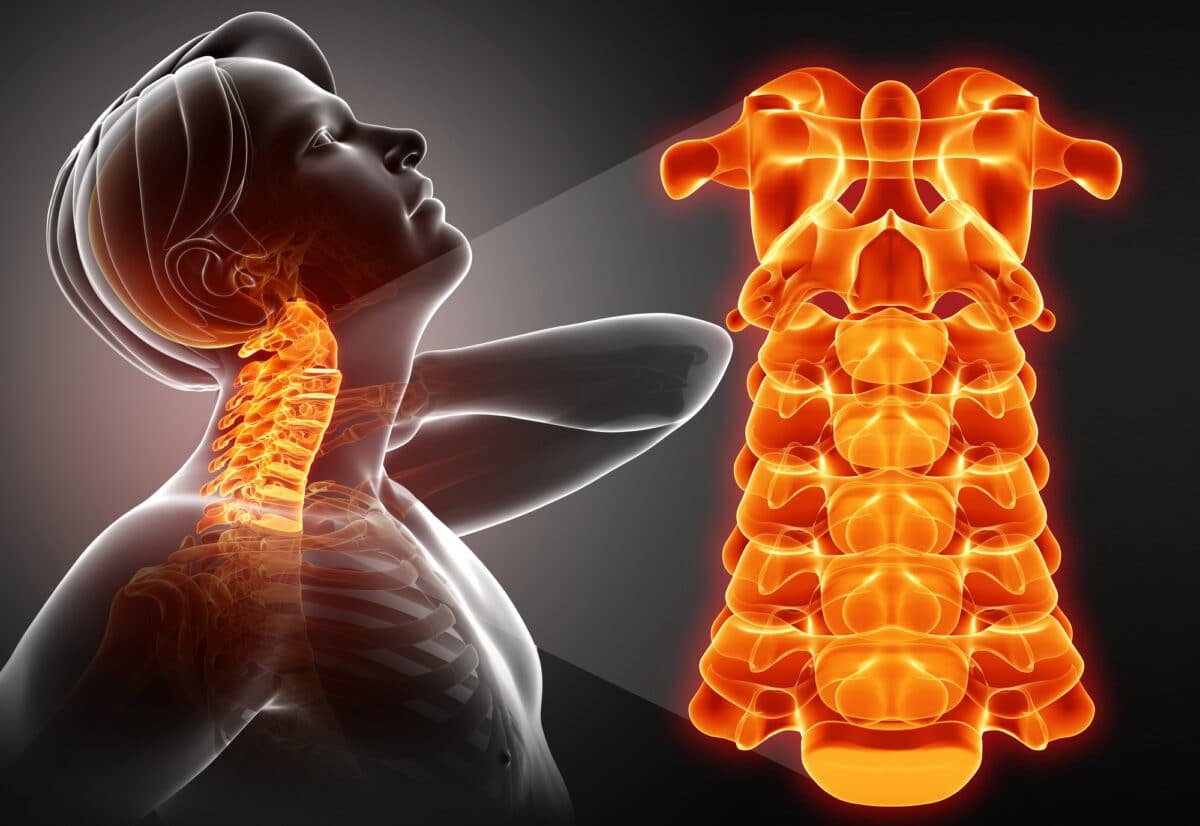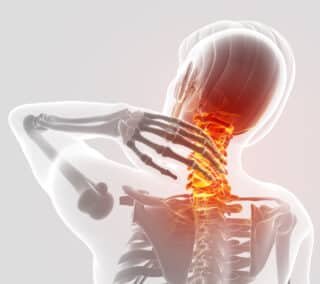NECK PAIN

The term neck pain (which is sometimes referred to not so correctly as cervical syndrome) simply means pain in the neck area, although sometimes the pain can also extend to the shoulder, shoulder blade, arm or even the entire upper limb. In fact, these are “cervical syndromes” since they are more than one type of problem that is caused by diseases of the cervical part of the spine.
Simple forms of cervical syndrome such as pain limited to the neck are due to simple causes such as fatigue of the neck muscles at work or sprain of a joint in the neck after an injury (such as in sports activities or after a car accident or even from very simple things like a restless sleep).
More severe forms of cervical syndrome are usually caused by degenerative disease of the cervical spine (wear and tear of the intervertebral discs and joints) which also manifests as pain from various movements, prolonged desk work, bending and other activities. The reason for the appearance of discomfort is disc disease, i.e. a projection or herniation of a cervical intervertebral disc which causes pressure, irritation or inflammation of a nerve (more often in younger people) or spondyloarthropathy (in older people). In cases where there is pressure on a nerve, symptoms include pain spreading to the upper limb, shoulder, shoulder blade, arm, numbness or even muscle weakness.
Symptoms
Symptoms include:
- Pain that is often worsened by holding the head in one place for long periods, such as when driving or working on a computer
- Muscle tightness and spasms
- Decreased ability to move the head
- Headache
When to see a doctor
Seek immediate care if severe neck pain results from an injury, such as a car accident, diving accident, or fall. Contact your orthopedist if neck pain:
- The injury is serious
- It persists for several days without relief
- It is accompanied by headache, numbness or weakness
Prevention

Most neck pain is associated with poor posture combined with age-related wear and tear. To prevent neck pain, keep your head in the center of your spine. A few simple changes to your daily routine can help. Try to:
- Maintain proper posture. When standing and sitting, make sure your shoulders are in a straight line over your hips and your ears are directly over your shoulders. When using cell phones, tablets, and other small screens, hold your head up and hold the device straight out instead of craning your neck to look down at the device.
- Take frequent breaks. If you are traveling long distances or working long hours at your computer, get up, move around and stretch your neck and shoulders.
- Adjust your desk, chair and computer so that the screen is at eye level. The knees should be slightly lower than the hips. Use the arms of your chair.
- If you smoke, quit. Smoking can increase your risk of developing neck pain.
- Avoid carrying heavy bags with straps over your shoulder. The weight can strain your neck.
- Sleep in a healthy posture. Your head and neck should be in line with your body. Use a small pillow under your neck. Try sleeping on your back with your thighs propped up on pillows.
- Stay active. If you don’t move much, increase your activity level.
- Category
- ΠΑΘΗΣΕΙΣ ΕΝΗΛΙΚΩΝ

